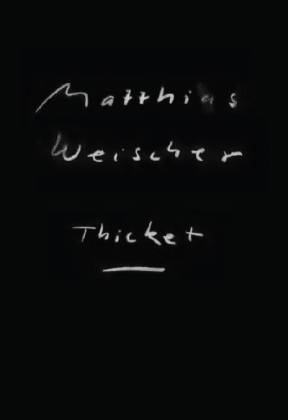
- Afhalen na 1 uur in een winkel met voorraad
- Gratis thuislevering in België vanaf € 30
- Ruim aanbod met 7 miljoen producten
- Afhalen na 1 uur in een winkel met voorraad
- Gratis thuislevering in België vanaf € 30
- Ruim aanbod met 7 miljoen producten
Zoeken
€ 33,95
+ 67 punten
Omschrijving
The Pulp Fiction of Painting
Thicket, as in the sense of scrub or undergrowth, is a concept Walter Grasskamp uses for a fascinating analogy in his brilliant essay "Pulp Fiction". In his new "Pulp" paintings Matthias Weischer, who is known for his pastose oil paintings produced using figurative as well as abstract set pieces, uses cotton fiber papier-mâché, which he mixes with paint. The term "Pulp Fiction" comes from American magazines of the period from the 1930s to the 1950s and refers to short or serial stories generally printed on cheap newspaper; hence the "pulp"; such as those made popular by Ross Mcdonald, Dashiel Hammett or Raymond Chandler, before such writers were able to publish actual books as recognized literary figures. Naturally this form of literature had no influence on art, but the collage-like use of paper by Picasso and Braque in Cubism had a long-term impact on the development of art in the 20th century. So for Grasskamp, what emerged was an interesting inversion. Whereas, in the West, the use of material became negligible under the influence of Duchamp and Beuys, in contrast, in the art academies of the East a genuine materialist teaching prevailed. Matthias Weischer, born in 1973 in the Westphalian town of Elte, began his studies in 1995 at the Leipzig Academy of Visual Arts. "Now open to the Western stance of an individual, experimental and free execution of art, the traditional academy in Leipzig offered him the chance to learn about all painting and printing techniques at a high level, and to develop his own personal technique and to find the themes that suited him." Thus the work of Matthias Weischer has achieved an unbelievable qualitative proximity to the work of somebody like Chuck Close or David Hockney.
Exhibition:
Grimm Gallery, Amsterdam, 2013
Thicket, as in the sense of scrub or undergrowth, is a concept Walter Grasskamp uses for a fascinating analogy in his brilliant essay "Pulp Fiction". In his new "Pulp" paintings Matthias Weischer, who is known for his pastose oil paintings produced using figurative as well as abstract set pieces, uses cotton fiber papier-mâché, which he mixes with paint. The term "Pulp Fiction" comes from American magazines of the period from the 1930s to the 1950s and refers to short or serial stories generally printed on cheap newspaper; hence the "pulp"; such as those made popular by Ross Mcdonald, Dashiel Hammett or Raymond Chandler, before such writers were able to publish actual books as recognized literary figures. Naturally this form of literature had no influence on art, but the collage-like use of paper by Picasso and Braque in Cubism had a long-term impact on the development of art in the 20th century. So for Grasskamp, what emerged was an interesting inversion. Whereas, in the West, the use of material became negligible under the influence of Duchamp and Beuys, in contrast, in the art academies of the East a genuine materialist teaching prevailed. Matthias Weischer, born in 1973 in the Westphalian town of Elte, began his studies in 1995 at the Leipzig Academy of Visual Arts. "Now open to the Western stance of an individual, experimental and free execution of art, the traditional academy in Leipzig offered him the chance to learn about all painting and printing techniques at a high level, and to develop his own personal technique and to find the themes that suited him." Thus the work of Matthias Weischer has achieved an unbelievable qualitative proximity to the work of somebody like Chuck Close or David Hockney.
Exhibition:
Grimm Gallery, Amsterdam, 2013
Specificaties
Betrokkenen
- Auteur(s):
- Uitgeverij:
Inhoud
- Aantal bladzijden:
- 96
- Taal:
- Engels
Eigenschappen
- Productcode (EAN):
- 9783864420672
- Verschijningsdatum:
- 11/11/2013
- Uitvoering:
- Paperback
- Afmetingen:
- 212 mm x 272 mm
- Gewicht:
- 484 g

Alleen bij Standaard Boekhandel
+ 67 punten op je klantenkaart van Standaard Boekhandel
Beoordelingen
We publiceren alleen reviews die voldoen aan de voorwaarden voor reviews. Bekijk onze voorwaarden voor reviews.








